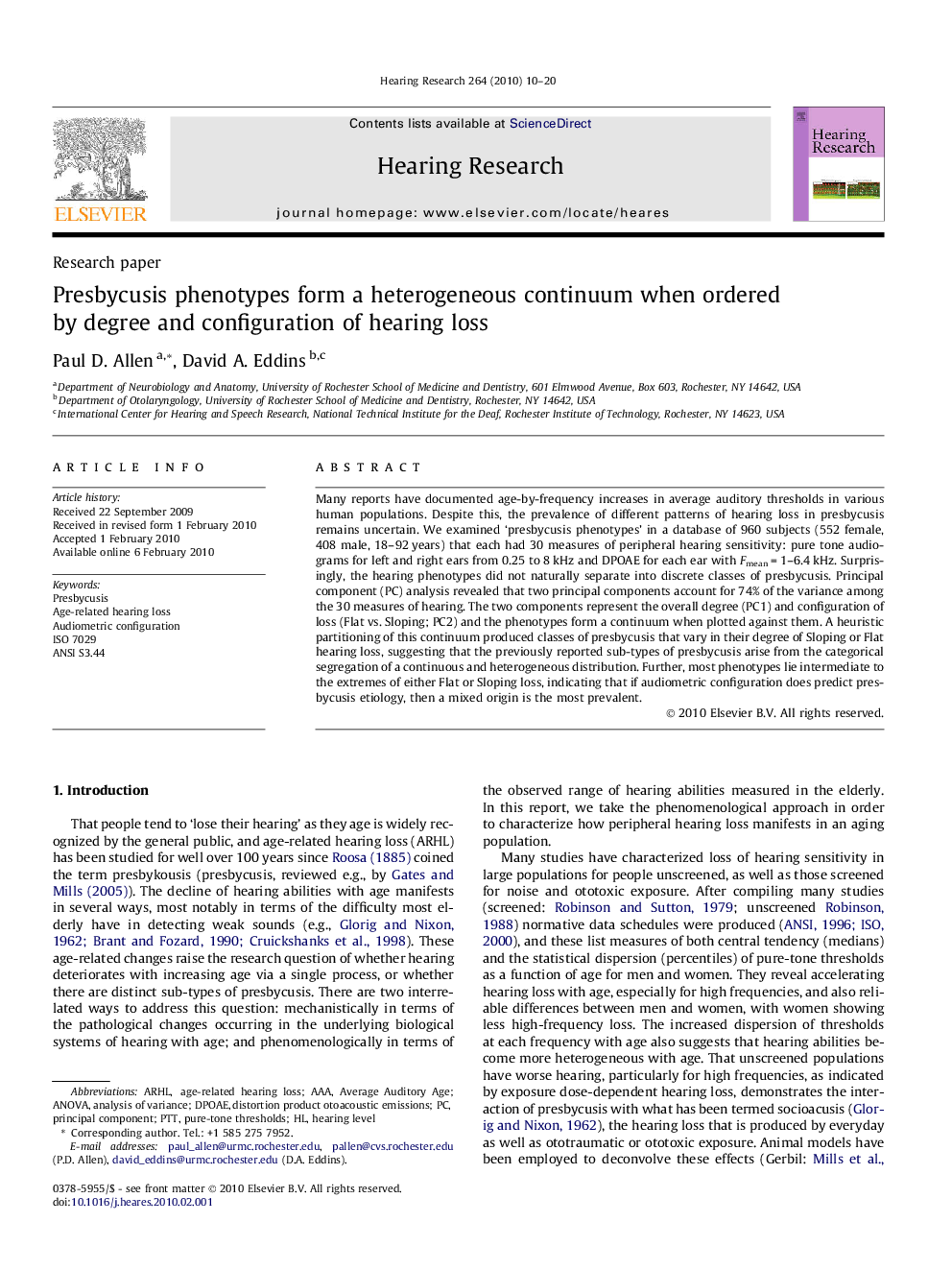| کد مقاله | کد نشریه | سال انتشار | مقاله انگلیسی | نسخه تمام متن |
|---|---|---|---|---|
| 4355628 | 1615636 | 2010 | 11 صفحه PDF | دانلود رایگان |

Many reports have documented age-by-frequency increases in average auditory thresholds in various human populations. Despite this, the prevalence of different patterns of hearing loss in presbycusis remains uncertain. We examined ‘presbycusis phenotypes’ in a database of 960 subjects (552 female, 408 male, 18–92 years) that each had 30 measures of peripheral hearing sensitivity: pure tone audiograms for left and right ears from 0.25 to 8 kHz and DPOAE for each ear with Fmean = 1–6.4 kHz. Surprisingly, the hearing phenotypes did not naturally separate into discrete classes of presbycusis. Principal component (PC) analysis revealed that two principal components account for 74% of the variance among the 30 measures of hearing. The two components represent the overall degree (PC1) and configuration of loss (Flat vs. Sloping; PC2) and the phenotypes form a continuum when plotted against them. A heuristic partitioning of this continuum produced classes of presbycusis that vary in their degree of Sloping or Flat hearing loss, suggesting that the previously reported sub-types of presbycusis arise from the categorical segregation of a continuous and heterogeneous distribution. Further, most phenotypes lie intermediate to the extremes of either Flat or Sloping loss, indicating that if audiometric configuration does predict presbycusis etiology, then a mixed origin is the most prevalent.
Journal: Hearing Research - Volume 264, Issues 1–2, 1 June 2010, Pages 10–20